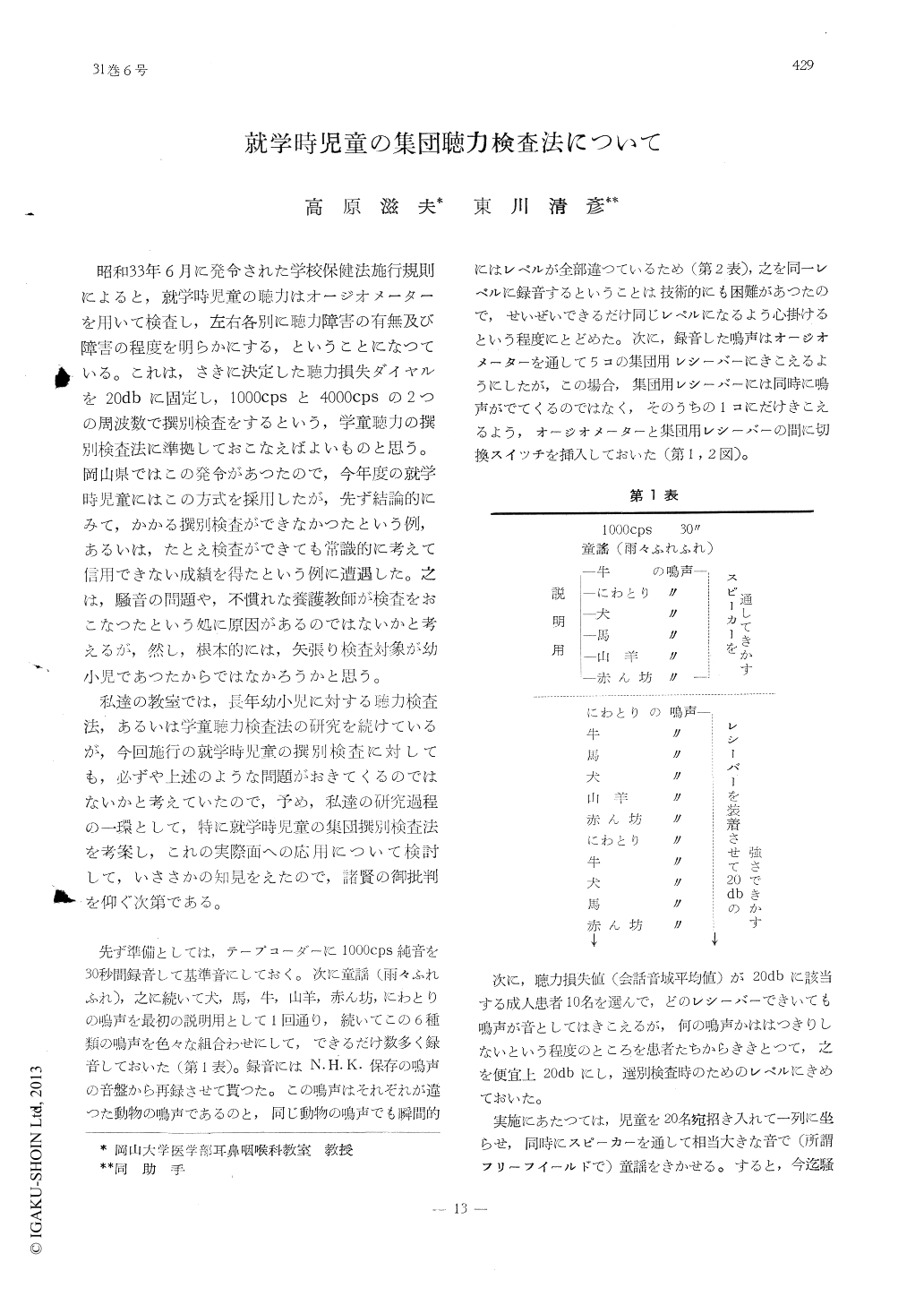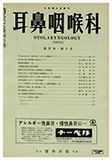- 有料閲覧
- 文献概要
- 1ページ目
昭和33年6月に発令された学校保健法施行規則によると,就学時児童の聴力はオージオメーターを用いて検査し,左右各別に聴力障害の有無及び障害の程度を明らかにする,ということになっている。これは,さきに決定した聴力損失ダイヤルを20dbに固定し,1000cpsと4000cpsの2つの周波数で撰別検査をするという,学童聴力の撰別検査法に準拠しておこなえばよいものと思う。岡山県ではこの発令があつたので,今年度の就学時児童にはこの方式を採用したが,先ず結論的にみて,かかる撰別検査ができなかつたという例,あるいは,たとえ検査ができても常識的に考えて信用できない成績を得たという例に遭遇した。之は,騒音の問題や,不慣れな養護教師が検査をおこなつたという処に原因があるのではないかと考えるが,然し,根本的には,矢張り検査対象が幼小児であったからではなかろうかと思う。
私達の教室では,長年幼小児に対する聴力検査法,あるいは学童聴力検査法の研究を続けているが,今回施行の就学時児童の撰別検査に対しても,必ずや上述のような問題がおきてくるのではないかと考えていたので,予め,私達の研究過程の一環として,特に就学時児童の集団撰別検査法を考案し,これの実際面への応用について検討して,いささかの知見をえたので,諸賢の御批判を仰ぐ次第である。
The School Health Law adopted in June, requires, beginning the school-year 1959, each child reaching the school age be given a com-plete hearing test by means of the audiometer where in the individual's hearing acuity may be recorded according to the findings of the fact.
However, this method of examination is highly difficult in application because of the fact the participant is a child and quite often the data thus obtained may be either erro-neous or useless.
In order to circumbent such a difficulty the authors have tried a new method in which the examinee is given an animal sounds that may be quite familiar to him. These sounds are pre-recorded at similar tonal levels which may be altered to either low or high for the test and the child is asked to point to the picture of the animal which he thinks the sound belongs.

Copyright © 1959, Igaku-Shoin Ltd. All rights reserved.


